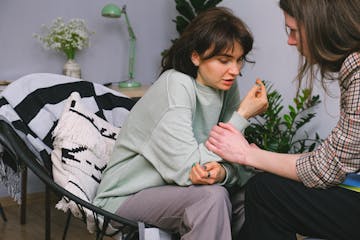Fear is a natural emotion that we all experience at some point in our lives. However, when this fear becomes a phobia, it can have a significant impact on a person's life. One of the least known but no less shocking phobias is phalacrophobia, also known as fear of baldness.
Symptoms of phalacrophobia
Phalacrophobia is characterized by an intense, persistent and irrational fear of losing hair and becoming bald. People who suffer from this phobia may experience a wide range of emotional and physical symptoms, including:
- Anxiety or extreme discomfort when thinking about baldness
- Avoidance of situations where you can talk or think about the possibility of going bald
- Constant obsession with the appearance of your hair
- Feeling of inability to control thoughts related to baldness
- Self-esteem problems and negative self-image
- Physical symptoms such as sweating, tachycardia and tremors when faced with the possibility of losing hair
Causes of phalacrophobia
Like other phobias, phalacrophobia can have various causes, which can vary from one person to another. Some possible causes of this fear of baldness include:
- Genetic factors: People with a family history of baldness may be more likely to develop phalacrophobia.
- Social pressure: Beauty standards and social pressure can influence the perception of physical appearance and trigger fear of baldness.
- Traumatic experiences: Traumatic events related to physical appearance or hair loss can contribute to the development of the phobia.
- Anxiety disorders: Phallacrophobia is often related to other anxiety disorders, such as generalized anxiety disorder or hypochondria.
Treatments for phalacrophobia
Fortunately, phalacrophobia is a treatable phobia and there are several treatment options that can help people overcome their fear of baldness. Some of the most common forms of treatment for phalacrophobia include:
Cognitive behavioral therapy (CBT)
CBT is a widely used therapeutic approach to treat phobias and other anxiety disorders. . During CBT, a therapist helps the person identify and change irrational thoughts and avoidance behaviors associated with baldness. CBT may also include gradual exposure techniques, where the person is gradually exposed to situations that trigger their fear of baldness.
Exposure therapy
Exposure therapy is a form specific treatment that focuses on helping the person face their fears in a controlled and safe way. In the case of phalacrophobia, exposure therapy may involve looking at pictures of bald people, talking about baldness, or even imagining yourself without hair. Over time, repeated exposure can help reduce the anxiety and discomfort associated with baldness.
Medications
In some cases, medications such as anti-anxiety medications or antidepressants may be helpful. Prescribed to help manage the symptoms of anxiety and depression associated with phalacrophobia. It is important that these medications are prescribed and supervised by a mental health professional to ensure their effectiveness and safety.
Psychological support
Psychological support from friends, family or support groups can play an important role in the phalacrophobia recovery process. Sharing experiences, feelings, and concerns with others who can understand what you are feeling can provide comfort and motivation during treatment.
Our Perspective
In summary, phallacrophobia is a phobia that It involves an intense fear of baldness, with symptoms ranging from extreme anxiety to self-esteem problems. However, with the right treatment and the necessary support, people who suffer from phalacrophobia can learn to manage their fear and improve their quality of life. If you think you have phalacrophobia or know someone who may be experiencing this fear, do not hesitate to seek professional help to overcome this phobia and regain control over your thoughts and emotions.
Author: Psicólogo José Álvarez


